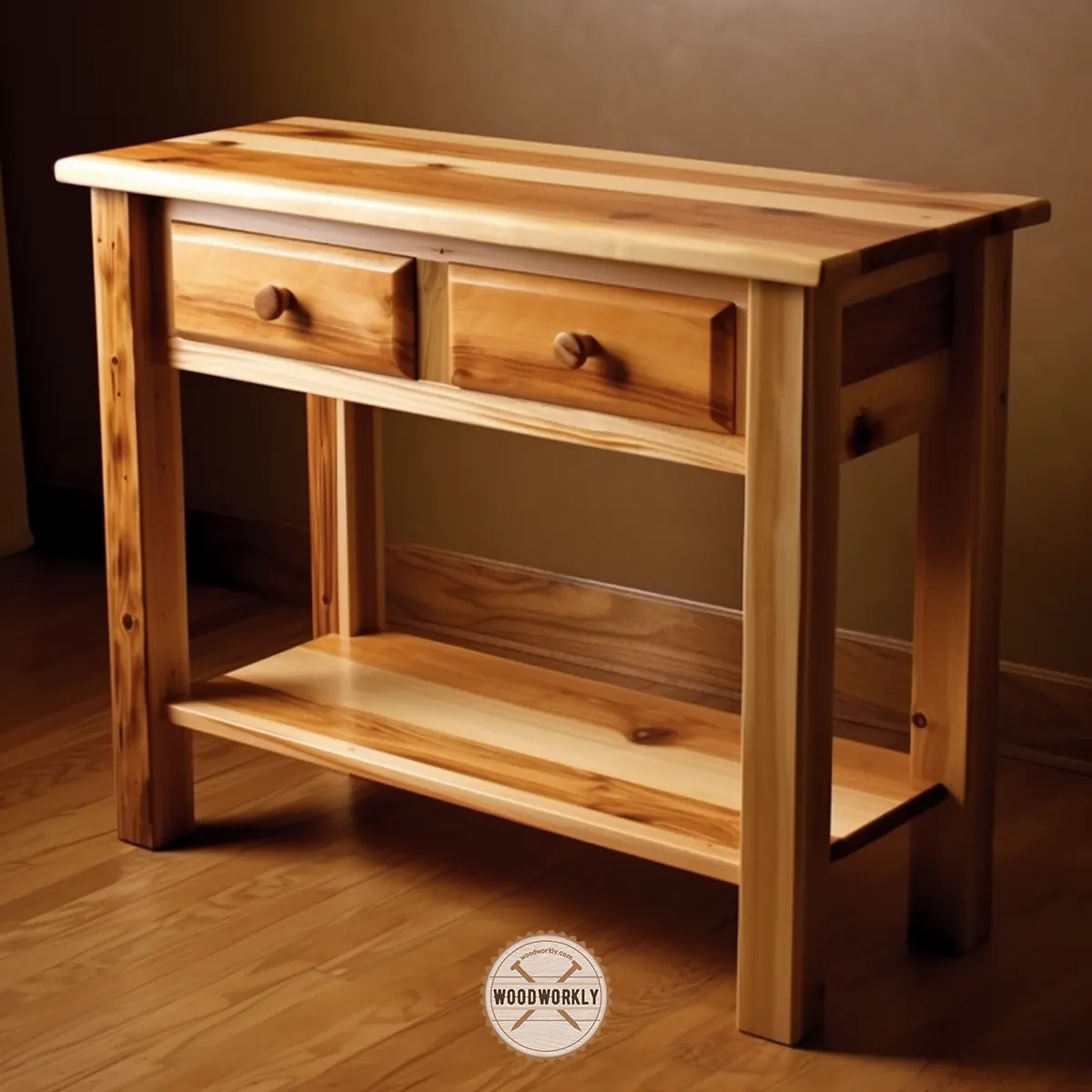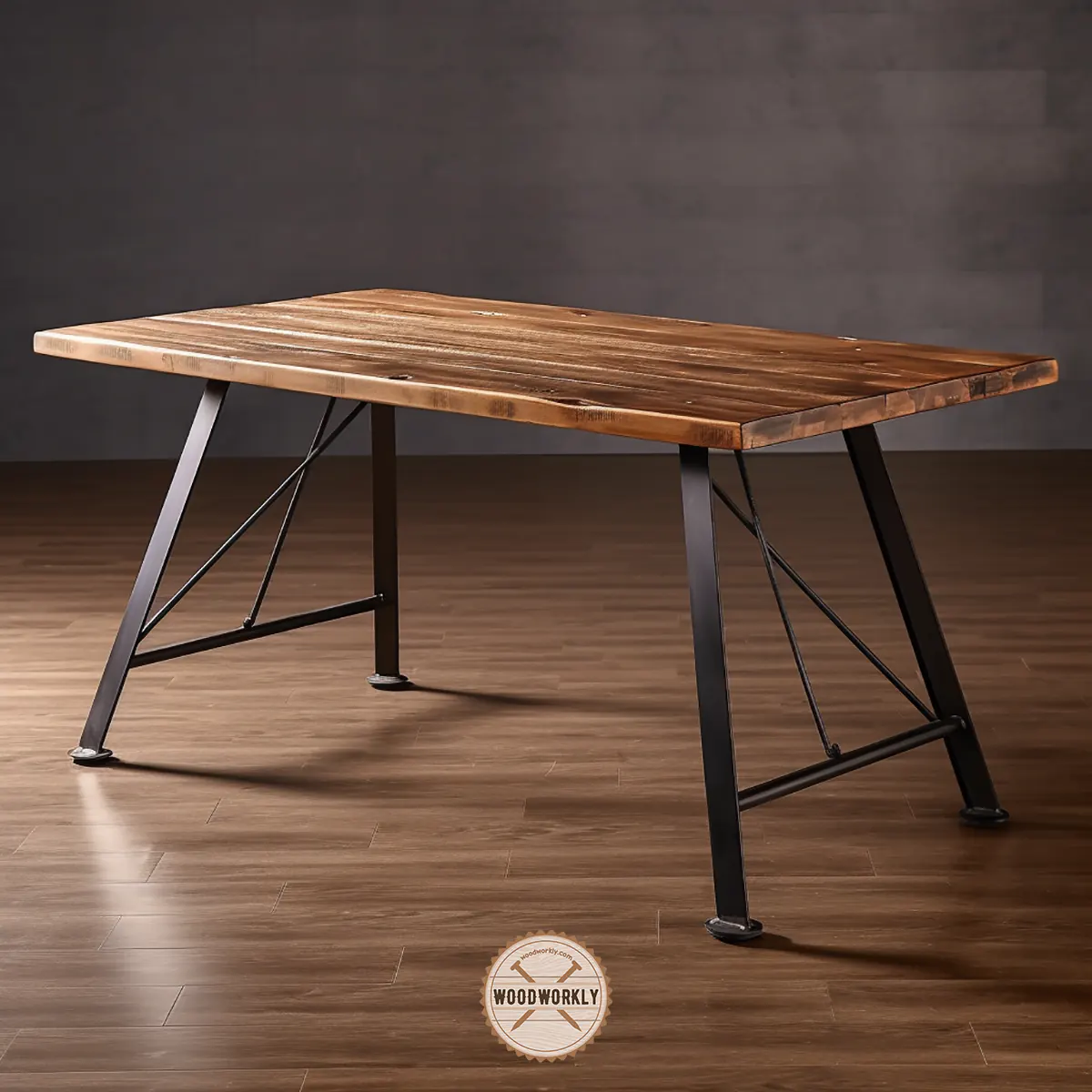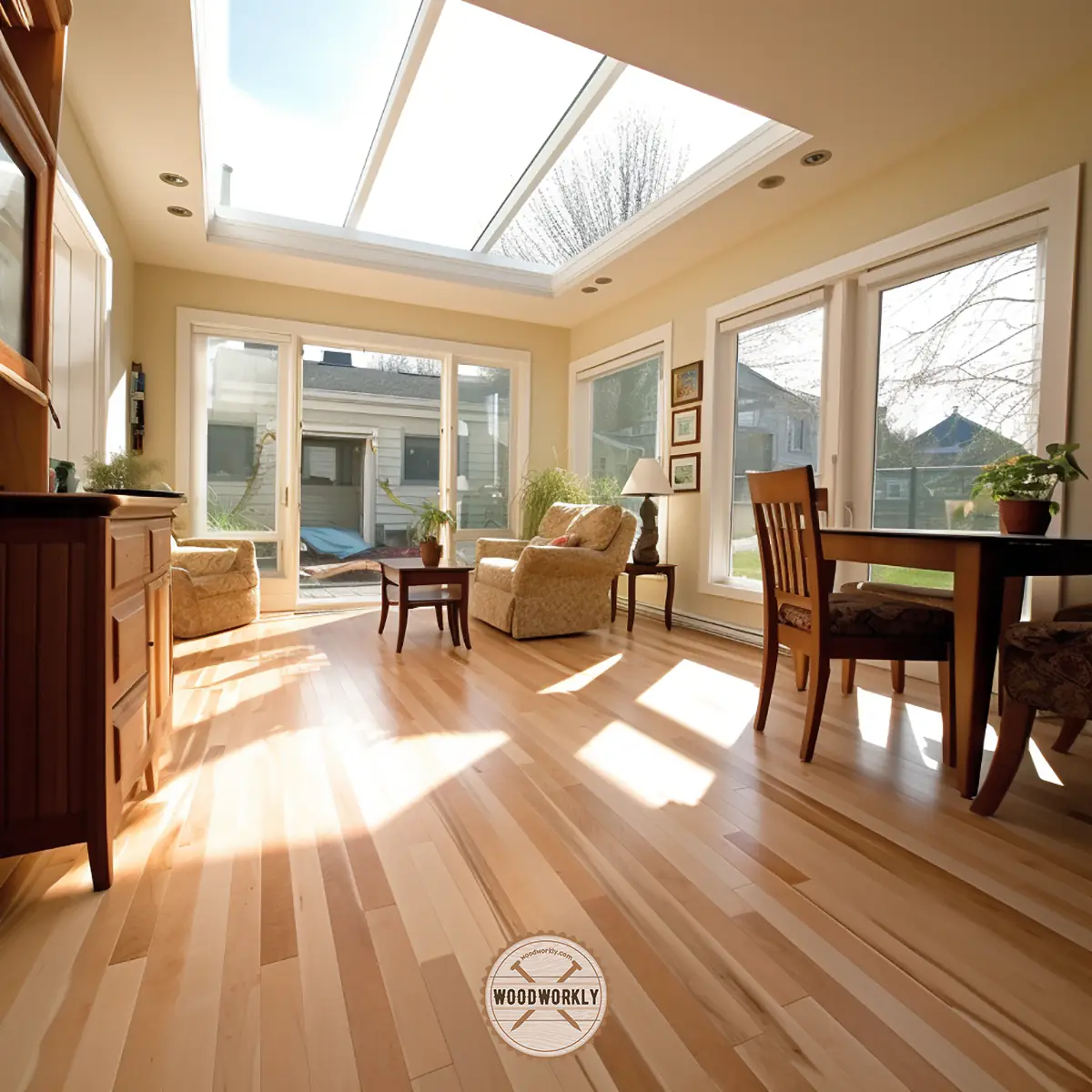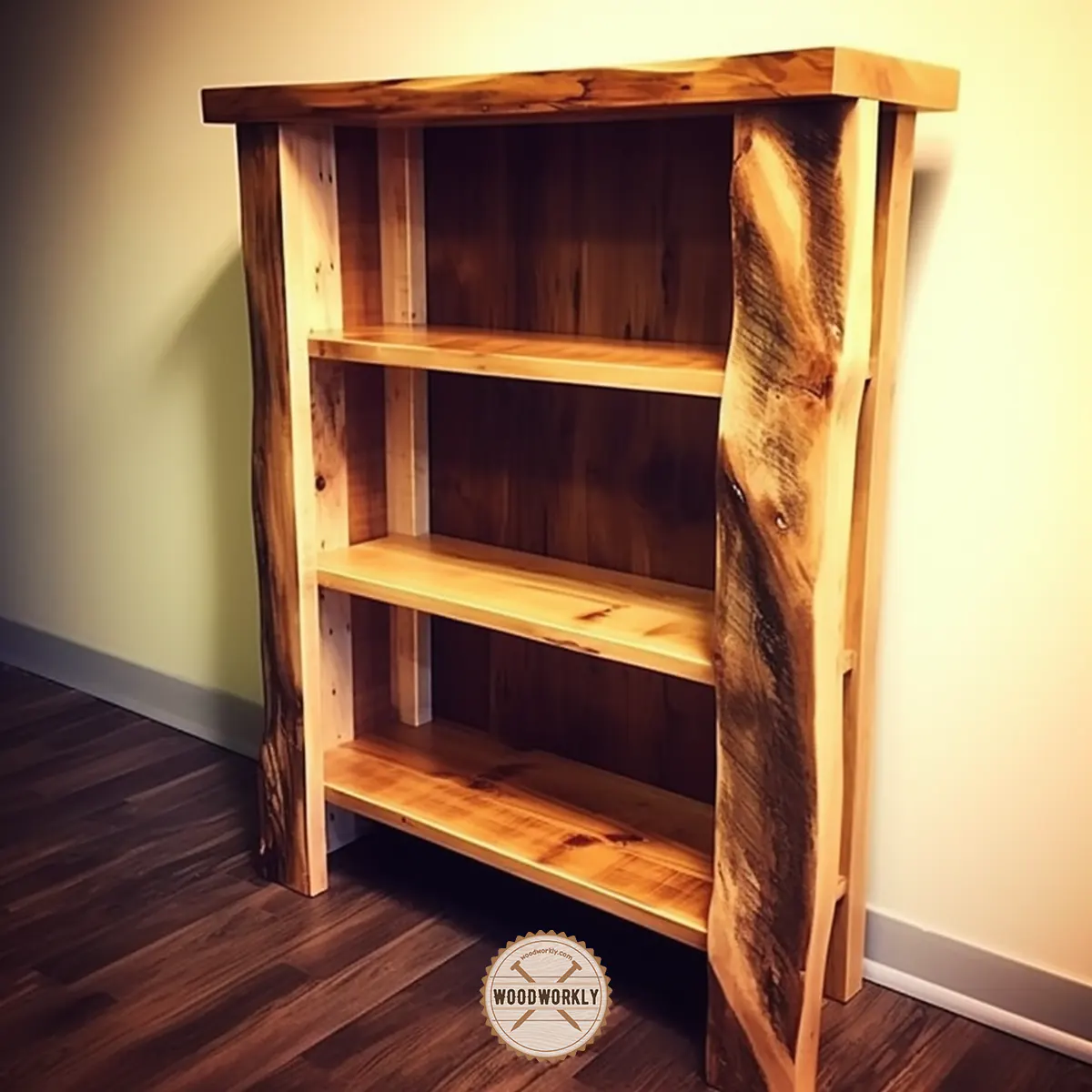Ever wondered about the strength of Poplar wood? Does it hold up against other woods in your projects? Let’s explore this intriguing world of Poplar together!

Poplar wood is one of the most popular wood types commonly used for making furniture, toys, plywood, decorations, cabinets, etc.
Even though Poplar is considered a hardwood, working with Poplar is easy as softwoods like pine.
Because of that when it comes to interior design, poplar is a popular choice. Poplar wood is a budget-friendly option for woodworkers.
When I was started working with Poplar wood for interior and exterior woodworking projects, I was curious about its strength.
So, I did some research, and here is what I’ve found about, Is Poplar wood strong?
Yes, poplar wood is strong. It has a relatively high density, compressive strength, and bending strength compared to most softwoods. However, it’s not as strong as most hardwoods. It’s ideal for furniture making due to its workability and dimensional stability.
But that’s not all there is to talk about.

In this post, we’ll discuss how strong is poplar wood for various applications.
Such as furniture, bookshelves, beds, etc. Also, we’re going to compare the strength of poplar wood with other woods, such as pine, oak, and fir as well.
Let’s jump in!

First of all, let’s get a brief knowledge about what is poplar wood and its properties.
What Kind of Wood is Poplar?
Poplar, also known as tulipwood or yellow poplar, is a versatile and common type of hardwood that’s widely used for a multitude of applications.
Even though Poplar is classified as a hardwood, its properties resemble a cross between hardwood and softwood, thus making it an excellent all-around choice for many woodworking tasks.
Poplar: An Overview
Poplar belongs to the genus Populus, which includes over 35 different species of deciduous flowering plants.
The trees are renowned for their fast growth and the tall, straight trunks they develop, which makes them ideal for commercial lumber harvesting.
Botanically, poplar is classified as a hardwood because it’s an angiosperm, a group of plants that bear seeds within a fruit.
However, the hardness of poplar wood is comparatively less than most traditional hardwoods like oak or maple, but it’s stronger than most softwoods like pine or fir.
The misleading ‘hardwood’ label comes from the botanical classification rather than a direct reflection of the wood’s hardness.
Characteristics of Poplar Wood
Poplar is usually pale yellow to white in color, often with streaks of green, brown, or grey. It has a straight grain and medium texture, which contributes to its uniform look.
This uniformity makes poplar wood an ideal choice for carpenters and woodworkers, particularly for projects where consistency is crucial.
Here’re the key characteristic features of Poplar wood,
- Lightweight: Poplar is relatively light, making it easy to work with in various woodworking projects.
- Soft Hardwood: Despite being classified as a hardwood, poplar is relatively soft compared to other hardwoods, which allows for easy cutting, carving, and machining.
- Smooth, Straight Grain: Poplar has a generally straight grain with a fine, even texture, making it great for painting or staining.
- Color Variation: The color of poplar wood can vary widely, from a creamy white to a yellowish or greenish brown. The heartwood can also have streaks of purple, green or grey.
- Low Cost: Poplar is one of the less expensive hardwoods, making it a popular choice for furniture, cabinetry, and other wood projects where cost is a factor.

Workability
One of the key aspects that sets poplar apart is its exceptional workability.
Despite being classified as a hardwood, poplar is relatively soft, which makes it easy to cut, carve, and manipulate with woodworking tools.
It’s a fantastic choice for beginners looking to hone their woodworking skills, and professionals love it for its easy handling.
Density and Strength
The density and strength of poplar wood are among the factors that contribute to its popularity.
Poplar has a density or specific gravity of 0.42, higher than many softwoods and even some hardwoods.
This contributes to Poplar’s strength, making it a reliable choice for furniture, bookshelves, bed frames, and more.
Don’t worry I will discuss about its strength and density more in upcoming sections of this article.
However, when compared to some traditional hardwoods, poplar is considered a bit softer and less strong.
But it still outperforms many softwoods, striking a good balance between strength and workability.
Poplar in Comparison
When compared to pine, poplar is stronger and less likely to dent. However, it’s not as hard as oak, which has a higher Janka hardness value.
The hardness, strength, and other properties of poplar wood position it in a unique spot that bridges the gap between hardwoods and softwoods.
what is poplar wood used for
Poplar is used for a wide range of applications.
Due to its easy workability and lower cost, Poplar wood is commonly used for making furniture frames, crates, pallets, and even paper.
Poplar plywood is a favorite for many woodworkers due to its strength and resistance.
Another popular application of poplar is in making trim and moldings. Its ability to hold paint well makes it a desirable choice for interior trim work.
While Poplar is not usually the first choice for fine furniture due to its tendency to acquire dents and scratches, poplar wood is commonly used for painted furniture.
With good quality oil-based paint, you can increase the resistance of poplar wood to dents and scratches.
Overall here’s the list of uses of Poplar wood,
- Furniture making
- Cabinetry
- Pallets and crates
- Veneer and plywood
- Woodworking projects
- Picture and mirror frames
- Molding and millwork
- Musical instruments
- Pulp and paper production
- Toys and tool handles.

How Strong is Poplar Wood?
You can get an idea about how strong is poplar wood is by focusing on its,
- Density
- Compressive strength
- Bending strength
- Stiffness
- Hardness
When it comes to the density of particular wood, high density means the strength is high. Density is measured as specific gravity.
In poplar wood, the specific gravity is 0.42 which is higher than all the softwoods and some hardwoods.
This is one reason to indicate that poplar is a strong wood.
| Density | 0.42 |
| Compressive strength | 5540psi |
| Bending strength | 10100psi |
| Stiffness | 1.58Mpsi |
| Hardness | 540lb |
As we can see, all the above factors of poplar wood are high. Therefore, poplar wood is considered a strong wood type.
But you always, need to keep in mind that, Poplar is a little softer and less in strength than most hardwoods.
Is Poplar Wood Good For Furniture In Terms of Strength?
Even though poplar is considered softer than most other hardwoods, Poplar is a great choice for making furniture. It has great dimensional stability.
Poplar, even though it’s not as hard as some traditional hardwoods, is still strong enough to be used in furniture making.
Poplar has a higher density, compressive strength, and bending strength than most softwoods, making it a viable choice for furniture that needs to stand up to daily use.
In terms of strength, poplar furniture holds up well under normal use conditions.
For instance, poplar is a commonly chosen wood for bed frames.
Poplar possesses significant length and grain, making it suitable for these larger pieces of furniture.
The wood’s resistance to shrinkage adds to its durability, further ensuring the longevity of the furniture crafted from it.

Working with Poplar: A Dream for Woodworkers
The most important thing about poplar wood is its workability.
Because of being softer than most hardwoods, it takes manipulation with a lather, router, or saw well.
Poplar’s workability is one of its major selling points. It’s easier to manipulate than many hardwoods, making it a joy to work with for both novice and experienced woodworkers.
Whether you’re using a lathe, a router, or a saw, poplar wood responds well to shaping and cutting.
However, due to its soft nature, it’s essential to ensure that woodworking tools are well sharpened before working with poplar.
This way, you can avoid any tearing of the wood. Also, sanding should be done gradually, starting from coarse to fine-grit sandpaper for a smooth finish.
Whether you’re crafting an intricate bookshelf or constructing a sturdy bed frame, poplar wood is an option worth considering.
Just remember to apply the right kind of finish to maximize its durability and bring out its natural beauty.
Poplar wood is easy to carve. But you need to make sure that your woodworking tools are well sharpened before working with poplar.
Because the wood can tear easily if the cutting tools are not sharpened properly.
To avoid tearing, follow a slow feed speed. Drilling and other woodworking tasks should do slowly with poplar wood than other hardwoods because of its soft nature.
Sanding also should be done with fine-grit sandpaper by starting from 80 grit, 150, 300, and finally with 400 grit sandpaper for better finishing.
Finally, do a proper finishing with staining.
Pros and Cons of Poplar Furniture
Like any material, poplar has its advantages and disadvantages when it comes to furniture making.
Pros:
- Hardwood: As a hardwood, poplar is relatively strong and durable.
- Uniform Texture: Poplar has a uniform texture that leads to a consistent finish.
- Easy to Work With: Its softer nature makes poplar easy to shape and cut.
- Lightweight: Despite being a hardwood, poplar is relatively lightweight, making furniture easier to move.
- Cost-Effective: Poplar is usually cheaper than many other hardwoods, making it a budget-friendly option.
Cons:
- Easily Dented: Because it’s softer than most hardwoods, poplar can acquire dents and scratches more easily.
- Extra Sanding: Poplar requires careful sanding to achieve a smooth finish.
- Tears Easily: If your tools aren’t sharp, poplar wood can tear.
- Extra Steps for Outdoor Use: Poplar can be used outdoors, but it needs to be kept dry or appropriately treated to withstand the elements.

Enhancing Poplar Furniture
While poplar may not be the first choice for fine, high-end furniture, it’s commonly used for painted furniture.
Painting not only enhances its appearance but also adds an extra layer of protection against scratches and dents.
You can also increase the resistance of poplar wood to wear and tear by applying a good quality oil-based paint.
Finishing with staining or polyurethane can add to the lifespan and aesthetic appeal of the furniture piece.
So, is poplar good for furniture? Yes, of course! Despite some minor challenges, the strengths of poplar — its affordability, workability, and versatility — make it an excellent choice for many furniture-making applications.
If you have followed the above guidelines correctly when working with poplar wood, you’ll be able to get strong poplar wood furniture for interior and exterior usage.
Poplar wood advantages and disadvantages
I have researched and listed down some advantages and disadvantages you’ll get by using poplar wood for furniture.
| Pros | Cons |
| Hardwood | Dents and Scratches acquire easily |
| Uniform texture | Need more paint |
| Easy to work with | Require light sanding |
| Lightweight | Tear up easily |
| Can use for outdoor only if it keeps dry | |
| Inexpensive |
Because of the disadvantages of poplar wood, It’s not the first choice when it comes to furniture making.
But it is commonly used for painted furniture.
Tip: You can increase the resistance of poplar wood to dents and scratches by applying good quality oil-based paint on top of it.
However, poplar wood furniture is known as one of the cheapest hardwood furniture you can get from the market.

Is Poplar Wood Strong Enough for Bookshelves?
Yes, Poplar wood is strong enough for bookshelves.
The only problem that occurs when using poplar wood for bookshelves is poplar gets inevitably painted, hidden, or veneered.
Poplar is the stiffest and most common for basic shelving.
The great thing about Poplar is its hardness. It is significantly harder than white pine but relatively softer than yellow pine.
Poplar is an easy common working wood that can be painted. Poplar trim is easy to work with. It paints well and is inexpensive as well.
After making the poplar bookshelf, I highly recommend finishing it with paint or a polyurethane finish to get the best output. This helps to increase the lifetime of your bookshelf.
Poplar plywood is also known as one of the best choices for making bookshelves.
It is high-grade plywood with great strength and resistance than much other plywood available in the market.
If you’re a beginner in woodworking and going to make a bookshelf by yourself, Poplar is highly recommended to practice your skills. Poplar craves perfectly.
After the building part is done, do proper sanding and apply the finisher for the best results.
Apart from using poplar for bookshelves, the best alternatives you can go for are,
- Pine
- Cherry
- Koa
- Red Oak
- Padauk
- Mahogany

Is Poplar Strong Enough For A Bed?
Poplar is strong enough for a bed. It is known as the most common type of wood for bed frame making.
It has a significant length and grain around 16 feet long which makes it perfect for bed frames. The assembling is also pretty much easy.
Even though it is softer than most hardwoods, poplar is more durable and resistant to shrinkage than every type of softwood. This makes it strong for bed.
Because of its strength and high workability poplar wood is a great choice for all interior furniture without any doubt.

is poplar a Hardwood?
Yes, poplar is indeed a hardwood. It comes from the deciduous yellow-poplar or tulip tree (Liriodendron tulipifera), which is native to the eastern United States.
Like other hardwoods, the yellow-poplar tree loses its leaves every year, and it produces seeds encased in a protective covering.
Yes, poplar is a softer kind of hardwood. Even though it’s classified as a hardwood, it’s not as hard or as dense as some other types, like oak or maple.
Poplar’s specific gravity, which is a measure of its density, is 0.42. This is higher than all softwoods and some hardwoods, indicating its relative strength.
Its Janka hardness test value is 540 lbf (pound-force), which is at the softer end of the hardness scale for hardwoods but still harder than many softwoods.
However, the softer nature of poplar does come with advantages. It is easy to work with, making it popular among woodworkers for a variety of projects, including furniture making.
It’s also more affordable than many other hardwoods, adding to its appeal for both professional and amateur carpenters.
In terms of hardness, poplar wood moves towards the bottom end of the hardness scale with a 540 rating for the Janka hardness test value.
Poplar Wood Hardness Comparision
You can clearly get an idea about Is poplar wood strong by considering its hardness values from this hardness scale.
| Wood Type | Janka Hardness Value (N) | Grades |
| Ebony (Brazilian) | 16420 | Exceedingly Hard |
| Cumaru | 15470 | Exceedingly Hard |
| Ebony | 14300 | Extremely Hard |
| Golden Teak | 10400 | Extremely Hard |
| Rosewood | 7900 | Hard |
| White Oak | 6000 | Hard |
| Ash | 5900 | Somewhat Hard |
| Birch | 5600 | Somewhat Hard |
| Walnut | 4500 | Firm |
| Cherry | 4200 | Firm |
| Mahogany | 3600 | Firm |
| Douglas Fir | 2900 | Soft |
| Chestnut | 2400 | Soft |
| Poplar wood | 2400 N (540 lbf) | Soft |
| White Pine | 1900 | Very Soft |
| Balsa | 310 | Very Soft |
As you can see the hardness of poplar is not satisfying when compared with other hardwoods. This is why the resistance to dent and wear is poor in Poplar wood.

Is Poplar Wood Stronger than Pine?
Yes, poplar wood is stronger than white pine but is softer than yellow pine. According to the Janks hardness value, poplar has 540 lbf while white pine wood gets 420 lbf value.
Poplar’s relative strength, combined with its excellent workability, makes it a popular choice for many interior projects, including furniture, cabinets, and bookshelves.
Read to know more about the strength of pine wood!
On the other hand, because of its susceptibility to denting, pine might not be the best choice for high-traffic or high-use pieces.
There are many types of pine woods, for example, poplar is stronger than white pine but weaker and softer than yellow pine with 80 lbf.
Even though pine wood has similar strength as poplar, it dents easily. They tend to crack and split when they dry.
They’re very sensitive to temperature levels.
Therefore, Poplar is better than pinewood when it comes to interior and exterior furniture in terms of strength and durability.
Is Poplar Stronger than Oak?
Oak is much stronger than Oak. When we look at Janka hardness values,
- Oakwood – 1290 lbf
- Poplar wood – 540 lbf
As you can see there is a clear difference between them. In terms of strength and durability, oak wood is way better than poplar.
The good side of Poplar is its straight grain with zero knots. It easily bends and flexible than oak wood which makes it a better choice for making shelves, frames, and walkways.

That’s it, folks! Now you know how strong Poplar wood is with all its characteristic features.
Let’s answer some frequently asked questions as well.
FAQs
Is Poplar Wood Durable?
Poplar wood is reasonably durable, with better resistance to warping and shrinkage than softwoods. However, it’s softer than many hardwoods, meaning it may show dents and scratches more easily.
Can Poplar Wood Be Used Outdoors?
While poplar can technically be used outdoors, it’s not naturally resistant to decay and insects like some other woods, so it should be properly sealed or painted, and even then it’s best suited for areas that remain relatively dry.
Is Poplar Wood Expensive?
Compared to many other hardwoods, poplar is relatively inexpensive, making it a popular choice for many woodworkers on a budget.
Did I cover all you wanted to know about: Is Poplar Wood Strong?
From this article, I have widely discussed, Is poplar wood strong, what makes it strong, poplar wood for furniture in terms of strength, poplar wood for making bookshelves,
We have compared the strength of poplar wood with other popular hardwoods like oak.
Poplar wood is indeed strong, possessing a greater density, compressive strength, and bending strength than many softwoods. While it falls short of the strength of some hardwoods, its ease of work and stability make it a popular choice for interior furniture and other woodworking projects.
According to the advantages and disadvantages of poplar wood, you can consider poplar wood for your next woodworking project with ease.
The workability of poplar wood is incredible and useful for beginners.
Hope you have learned everything you wanted to know about, is Poplar wood strong?
So, let’s give it a try and start making bookshelf bed frames or any other woodworking project with it.
Hope you’ll get the best results with enough practice!
I couldn’t rеfгain from commenting. Exceptionally well
written!